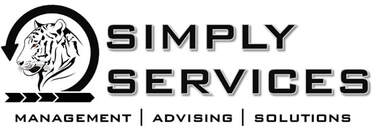|
Most people don’t plan to fail, they fail to plan. – John L. Beckley
Have you or your business put together a budget for next year? For larger businesses the budget process is under full swing with meetings, analysis, calculations and submissions. Larger businesses and organizations have a formalized, mature budget process that they usually begin at the start of the fourth quarter or earlier in some cases. But what about smaller businesses? Some businesses do not put a budget together at all. But a budget is critical for a business, especially a small business. The first thing to realize is that budgets are your roadmap for the coming year. No one has to have a crystal ball or needs to be psychic and budgets are not chiseled in stone. If you have a good understanding of your business and industry you can put together a good budget. Beyond having a template to enter numbers, how do you build a budget? You can estimate a number and enter it every month but this may not help you build an accurate budget. Also, how do you measure the success of your budgeting? Is your business going in the right direction? The first thing you need to do is ask where you want your business to be in five years. It does not have to be specific or detailed. This will help you frame your budget for the following year. Think of your budget as the first steps in a five year journey. Next, there are expenses that are consistent and will never change or fluctuate with business activity such as non-business utilities, membership renewals, rent or leases. These are your fixed costs. Keep in mind that some costs will fluctuate. For example here in south Texas we know that our electricity costs increase in the summer because we will use our ac more due to the high summer heat. Businesses in the north may want to adjust for fuel for the winter in the same fashion. Also make sure to exclude any one time costs that were out of the ordinary that you will not see in the next year. Some budgets are built off of last year’s numbers and sometimes include onetime costs. Next item is to look at your variable costs. These are costs that are impacted by business activity. One of the best ways is to forecast sales volumes and multiply by the costs of producing/providing the goods or services. The quickest way to calculate this is take the cost divided by products produced or services provided. You may want to make this calculation for each month of the current year to see if there were any trends. Your production costs may have increased during the year and you would be using an average as opposed to the new production cost. If you perform this calculation during the year you will know this number beforehand and will help you to be proactive in addressing costs. Now you may feel unsure about forecasting your sales volumes. What you can do is look at the previous three years, is there some seasonality in your numbers? In other words, are there months where you do more business than others? Some businesses provide goods or services that are in demand in the summer and others see their demand during the holidays. If volume growth has been small you may be able to take the current years volumes and add the average increase in your year over year activity. If not take your current years volumes and enter them. You can then take the volumes and multiply them by the costs to provide the good or service, for example, this task requires so many hours from my employees at this pay. The best part about forecasting out volumes is now this will drive your sales revenue numbers. It is best to break out products or service volumes and apply the dollar figures item to provide a more accurate budget number, for example, dollars for product a times volumes for product a, and then the same methodology for product b. Trying to create one sales revenue budget number may not be accurate and may skew your budget.The next step is to review any projects or improvements you may make during the year. Large businesses usually have initiatives for either streamlining processes or carrying out major marketing initiatives or any other major project. Large businesses will usually calculate the impact and adjust their budgets accordingly. You may not carry out any major projects but if you know that in the coming year that you will purchase tools and equipment that will make work easier or allow for more products to be produced you need to adjust your budget for this. Also, if you know you want to market your business in the following year get a reasonable estimate and add it to the month or months that you will market for both the expense and the increase in sales volumes. Here historical costs based on previous efforts are helpful. Even though this may be difficult to know the impact (if any) but just be conservative in your expectations. The items above are, at a high level, some of the most important things to keep in mind when developing your budget. Again, this will not be held against you, as long as you know what the variances are due and realizing that some variances will carry out through the year.Next blog: How do you measure the success of your budgeting?
0 Comments
Leave a Reply. |
Archives
November 2020
Categories
All
|


 RSS Feed
RSS Feed